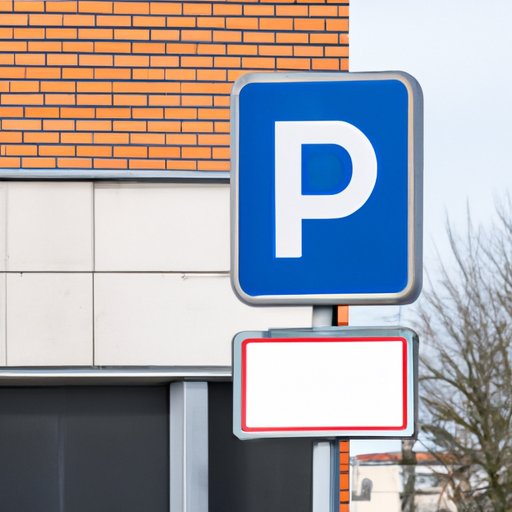
Introduction
Parking is a perpetual problem in urban areas. There are limited spaces where drivers can leave their vehicles, making it a challenge to find a spot near the destination. One of the most common scenarios drivers face is where they can park near stop signs. Many drivers are often confused about how close they can park to a stop sign without breaking the law and endangering other road users. In this article, we will explore the law’s nuances related to parking near stop sign, best practices, risks, and the consequences of breaking the law.
Understanding the Law: What Does the Law Say About Parking Near Stop Signs?
Before parking near a stop sign, it’s essential to understand the local traffic laws. In most regions, parking within 30 feet of a stop sign in any direction is considered an infraction and can result in a ticket and fine. Check with the appropriate local department or online resources that detail available information for your area. Sometimes, there may be a maximum or minimum distance in your region, and that should be strictly followed. Remember that the local traffic laws have different nuances, and the practices may vary from state to state.
Besides breaking the law, parking too close to a stop sign can increase your risk of getting into an accident and endangering pedestrians and other drivers. Therefore, it is crucial to know and follow the traffic laws of the region you’re in when parking near stop signs.
The Best Practices for Parking Near Stop Signs: Tips and Tricks for Drivers
While it is essential to follow and understand the local laws, you must also understand the best practices when parking near stop signs. When searching for a place to park, always look for spaces that meet the legal requirements and provide clear, unobstructed views for all drivers approaching the stop sign. Doing so will ensure that your vehicle does not impede the movement of other road users, reduce the risk of accidents, and prevent being fiscally penalized for parking improperly.
You must consider your parking space’s distance from the stop sign, the placement of your vehicle, and other environmental factors that may affect traffic flow. Avoid parking in designated “no parking” zones or blocking driveways, fire hydrants, or alleys. In case there are multiple lanes on the road, always park on the side nearest to the curb.
Reducing Traffic Risks: How Parking Near Stop Signs can affect the Traffic
Parked vehicles located close to stop signs can make it harder or nearly impossible for approaching drives to spot oncoming traffic or pedestrians. Due to the obstruction caused by the parked vehicles, sudden stops, and jerky turns may further disturb the traffic flow, increasing the risk of accidents. A driver may be speeding or driving without stopping when approaching the intersection due to inadequate site distance. Additionally, parked vehicles obstructing the stop sign can cause confusion regarding which lane to choose when approaching the intersection, leading to chaotic driving and accidents. Therefore, always pay attention to site distance and do not park too close to the stop sign.
Case Study: When Parking Near Stop Signs Turned Out to Be an Accident-Prone Area
Not too long ago, Brooklyn started to install electronic equipment on their stop signs to detect cyclists who may be approaching the intersections. One of the initial observations from officials was that a considerable number of accidents occurred in those particular areas where these electronic stop signs were installed. Most of these accidents resulted from improper parking near the stop signs, obstructing the visibility of drivers approaching the intersection, and hindering the cyclists’ movement. The result of such irresponsible parking is that it may cause severe injuries and property damages to others. Please follow all guidelines to avoid accidents.
Urban Planning Perspective: Why Signage and Enforcement are Equally Important for Parking Near Stop Signs
Good urban planning must include appropriate signage and an effective enforcement system that establishes clear standards in maintaining safe and compliant parking practices around stop signs. Urban planners must maintain the right balance between limiting the number of on-street parking spots and optimizing public accessibility. Striking the right balance to provide adequate parking and monitor law enforcement can help prevent repeat offenders, save lives, and increase traffic visibility.
Mindful and Responsible Parking: Some Things to Keep in Mind While Parking Near Stop Signs
Driving is an individual responsibility that must be taken seriously to avoid accidents and promote safe practices for all road users. As a driver, it is your responsibility to ensure that you park correctly, following traffic laws and best practices. Always maintain a clear line of sight, leave enough space for other drivers, and never park too close to the stop sign. Pedestrians or other drivers should never be obstructed by your vehicle, no matter how convenient it may seem. Do your part and maintain a responsible driving culture for yourself and those around you.
Conclusion
In conclusion, parking near stop signs can be a challenge, but understanding the law and following best practices can help reduce the risk of accidents and violations. Remembering to park responsibly and having the required knowledge of the laws can prevent accidents, penalties, and property damage. As a responsible driver, it is your responsibility to acknowledge and follow all the guidelines to create a safe driving culture. Drive safely, responsibly, and follow all the guidelines to ensure your safety and the comfort of your fellow drivers and pedestrians.




